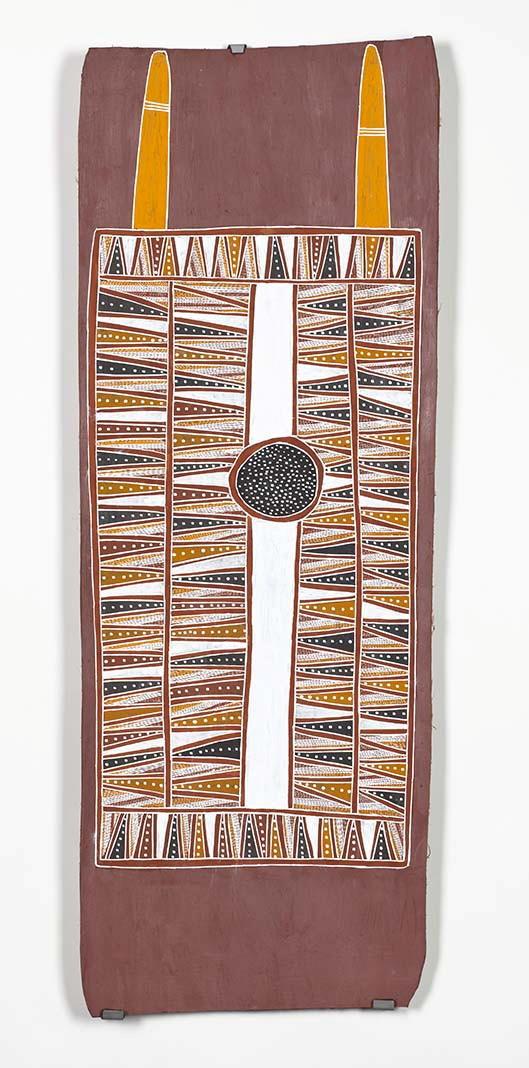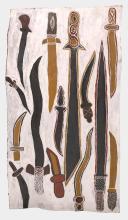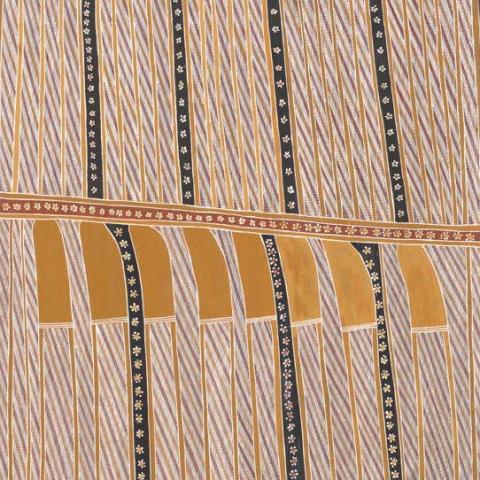Yolngu/Macassan contact
These works document contact between the Yolngu people of north-eastern Arnhem Land and Macassan Bugis fisher-traders from South Sulawesi, Indonesia. For over 500 hundred years, Macassans travelled annually to Marege (as they called the northern shores of Australia) on the early monsoonal winds to gather the prized trepang (sea slug) — for a lucrative trade with China. In Balirlira and the Macassans c.1958, Larrtjanga Ganambarr’s richly expressive episodic narrative of the interaction of a specific spirt man with the Macassans offers insights into the depth of the visitors’ influence on Yolngu art and culture.
The repetitive geometric designs in John Bulunbulun’s Body design – wind 2002 represent lunggurruma — the north-westerly winds that filled the sails of the Macassan perahus (wooden fishing boats), aiding their journey to northern Australia — as well as the distinctive triangular cirrus cloud formations that herald the seasonal change to monsoonal weather. Body paintings in earth pigments are part of annual rituals, during which performers sing and dance with decorative poles representing the mast of a perahu at sea.

The Yolngu/Macassan relationship was largely peaceful; life was enhanced and enlivened by the personal connections they made and through the exchange of labour and goods such as food, weapons, tools, arak (coconut palm flower wine) and cloth, which were integrated into daily life in Arnhem Land.
In Dhuwarrwarr Marika’s Macassan swords and long knives 2021, she represents the swords and knives introduced into Arnhem Land by Macassans, recalling her family’s close connection to the travellers. Ceremonial swords are embedded in Yolngu manikay (sacred songs) and still feature in ritual dances and ground sculptures. As the Yolngu mastered metalworking, these blades became essential tools for making hunting spears and crafting the dug-out canoes that enabled open-sea travel for the first time.
(l–r) Dhuwarrwarr Marika / Rirratjingu/Miliwurrwurr people / Australia b. c.1945 / Macassan swords and long knives 2021 / Natural pigments on wood; and Macassan swords and long knives 2021 / Natural pigments on bark / Purchased 2021 with funds from Anne Best through the QAGOMA Foundation / © Dhuwarrwarr Marika



